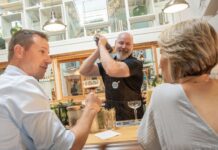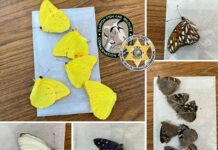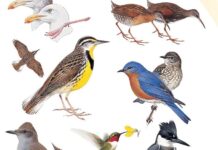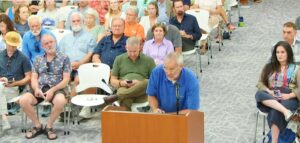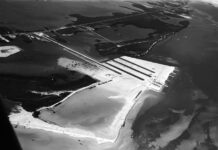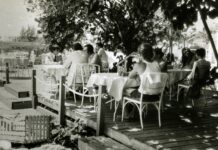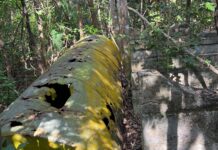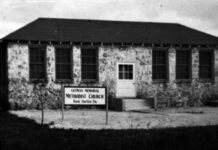The Spanish have been influencing the Florida Keys since shortly after the New World was discovered — indeed, since Ponce de Leon sailed past in 1513.
It was a June day when Juan Ponce de Leon and the small fleet of ships he was sailing with arrived at the last bunch of the Florida Keys. He named them Las Tortugas – the Turtles.
He chose the name not just because of the loggerhead and green turtles he saw swimming in the clear waters but also because of the ones he saw crawling up onto the islands to lay their clutches of eggs. When the fleet anchored offshore, crews worked to capture a reported 160 turtles as well as “fourteen seals … many pelicans and other birds that amounted to five thousand” to restock their food stores.
The islands are identified as the Dry Tortugas on later charts and those still used today.
The name honored the original Spanish name but also served as a navigational aid by indicating that the islands were dry and lacking any source of freshwater.
The Matecumbe Keys, too, honor early Spanish names given to the islands. Both Upper and Lower Matecumbe Keys have mostly retained the names given to them by explorers. Early Spanish charts identified the islands as Matecumbe la Viejo and Matecumbe Nuebo. However, if local legends are to be believed, those Spanish conquistadors really named the Matecumbe Keys Islamorada – the Purple Isles. (Matecumbe is one of the oldest place names in South Florida and dates back to 1573.)
It is not the only piece of lore that has stuck to one of the Florida Keys. There are excellent stories about a coral rock wall built by early Spanish inhabitants of Lignumvitae Key — which is found within the island of Islamorada.
In one story about the island that appeared in the Works Progress Administration Federal Writers’ Project (1939), the writer stated: “On Lignumvitae Key … are stone fences, wells, pieces of carved wood and wrought iron, the ruins of what is believed by some to have been a Spanish Village.”
The story has persisted, with some claiming that the coral rock wall was positioned to be used as a navigational beacon. In a popular book called “Charlotte’s Story,” written by Charlotte Neidhauk, who lived on Lignumvitae Key from 1953 to 1974, it states: “The wall cuts across the western part of the island. One other wall, attached to this about midway, divides the land behind the wall roughly in half. Inside the most westerly portion, near the wall, the Spanish constructed a watch house from which they could view the western part of the bay and watch for vessels.”
Perhaps what is more interesting, should there have been, once upon a time, a Spanish presence on the island, is that other islands in the area were seemingly overlooked. Indian Key, for example, with its convenient harbor and access provided by a relatively deep channel leading out beyond the reef line, would have made significantly more sense. Also, unlike Lignumvitae Key, it was not plagued by great electric clouds of bloodthirsty mosquitoes.
It is also interesting that no archaeologists nor anyone else has uncovered artifacts or documentation linking a Spanish presence to the island. It is curious, too, for those supporting the idea that it was the Spanish who built the wall, that it did not show up on the official government survey of the island in 1873. The primary 902-foot-long coral rock wall, positioned north and south, would have been difficult to miss for the survey crew hiking around the island. The wall’s shorter extension, mentioned by Neidhauk in her story, appears to be unaccounted for in the survey conducted on the island, too.
My favorite story about the mysterious coral rock wall is not about the enslaved Calusa and the Spanish forced to build the 3-foot-tall wall to keep the 8-foot-tall Indians out. At roughly 6 feet tall, I can easily climb over the wall.
This seems like the perfect place to point out that Lignumvitae Key is also known as Lignumvitae Key Botanical State Park and is not one of the backcountry islands where people can wander and explore willy-nilly.
As it always has been, the island is only accessible by boat. It is hard to imagine Spanish sailing ships attempting to navigate the area’s seagrass beds and narrow, shallow channels. For those without a boat who are looking to visit the island, ferry service is provided at Lower Matecumbe’s Robbie’s of Islamorada Friday through Sunday. Tours are provided by park rangers, who are the only ones authorized to show visitors the island’s nature trails and the wall.
When investigating the origin of the coral rock wall in 2016, Mike Wisenbaker, of the Florida Division of Historical Resources, suggested what seems like the most reasonable explanation in his 2017 report. He theorized that the coral rock wall was likely built during the island’s Matheson period (1919-1953).
It was 1919 when the Biscayne Chemical Company and president William John Matheson bought the island. After the island was purchased, Matheson authorized the construction of a two-story, four-bedroom coral-rock house. The Matheson house was not the only “improvement” done to the island.
Roads were cleared, trails made, and an airplane runway and coconut groves were created. Between 1928 and 1934, a bulldozer and rock crusher were transported to the island. Wizenbaker theorized it was during this time that the wall was built from the coral rock and cleared away during those construction projects. It is also during the Matheson period that the wall is first documented.


